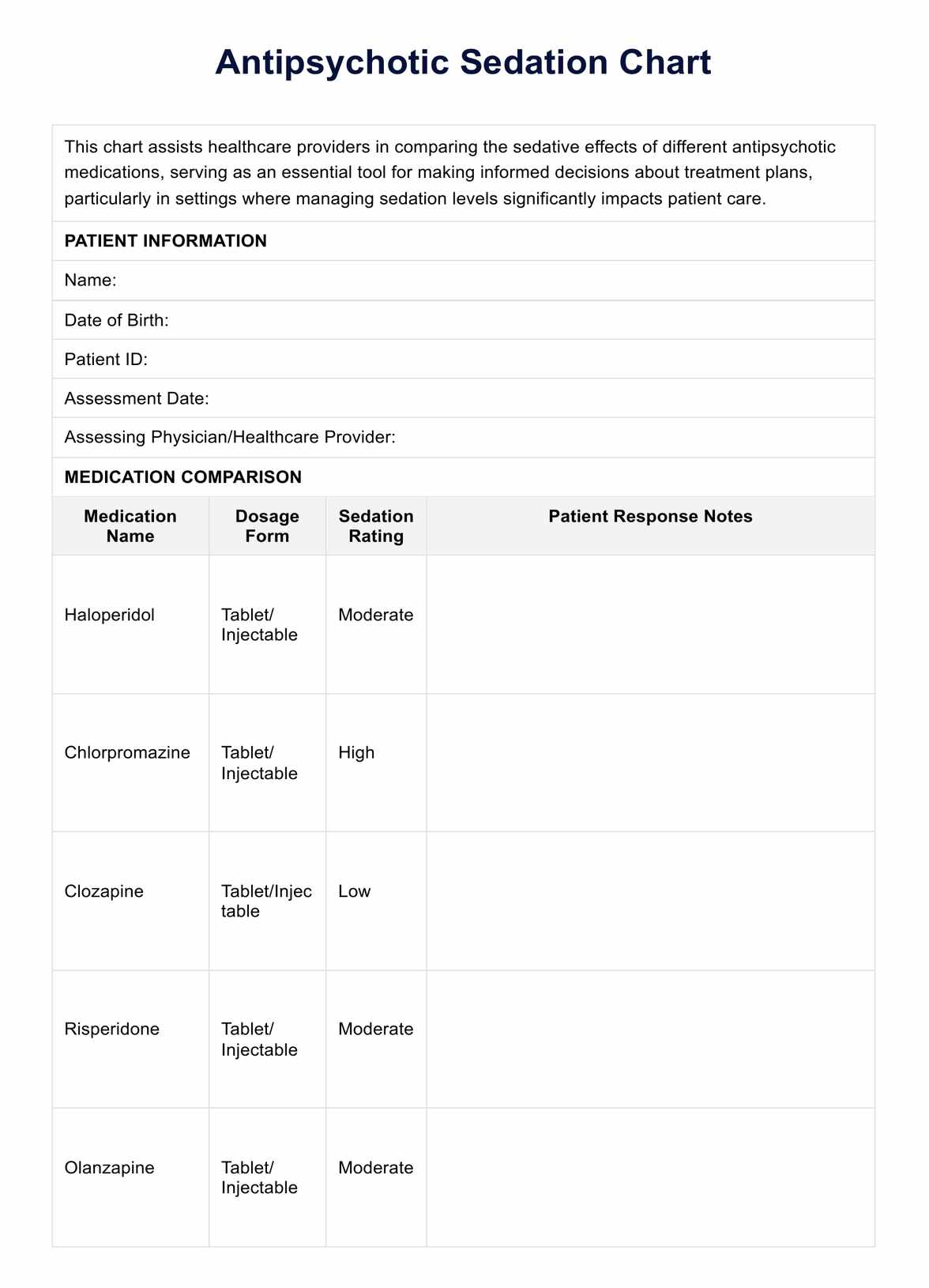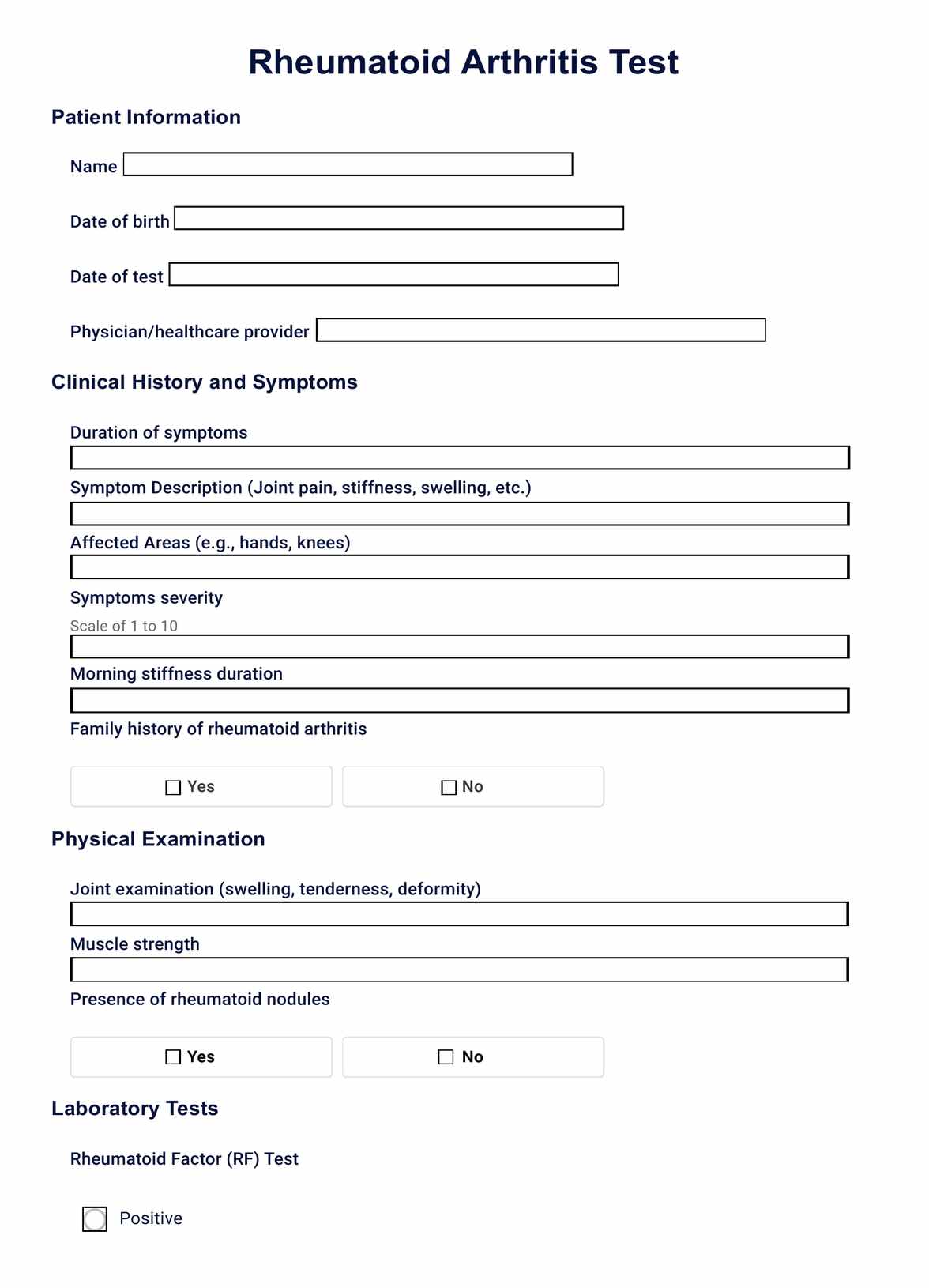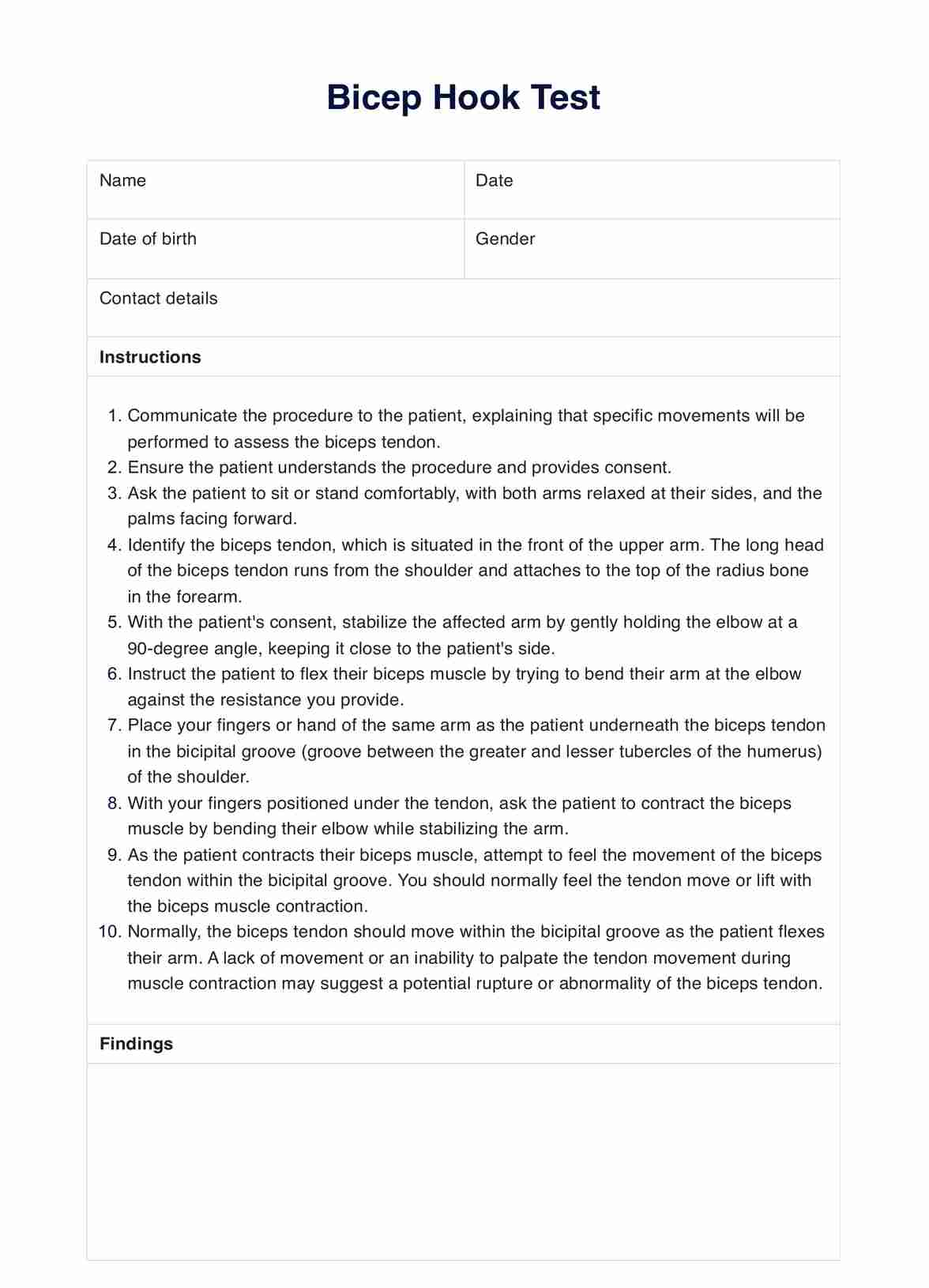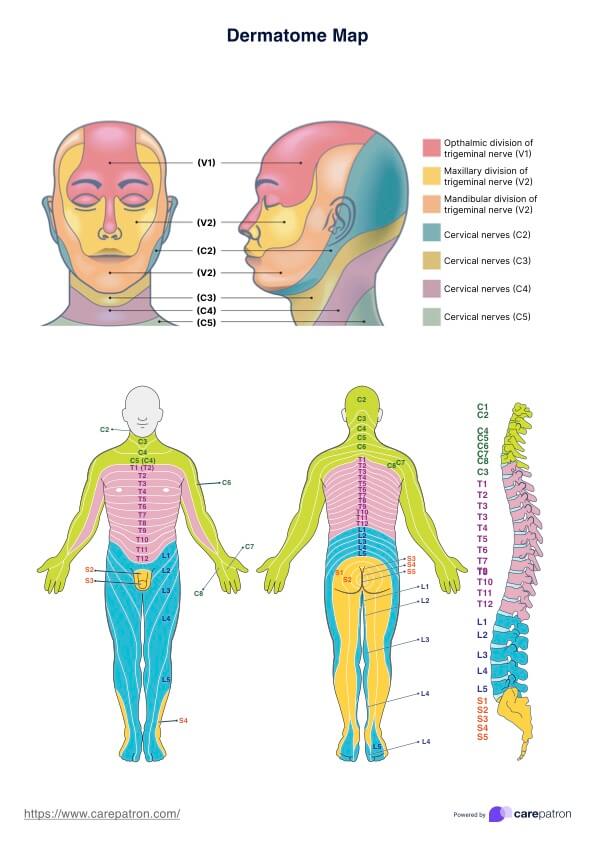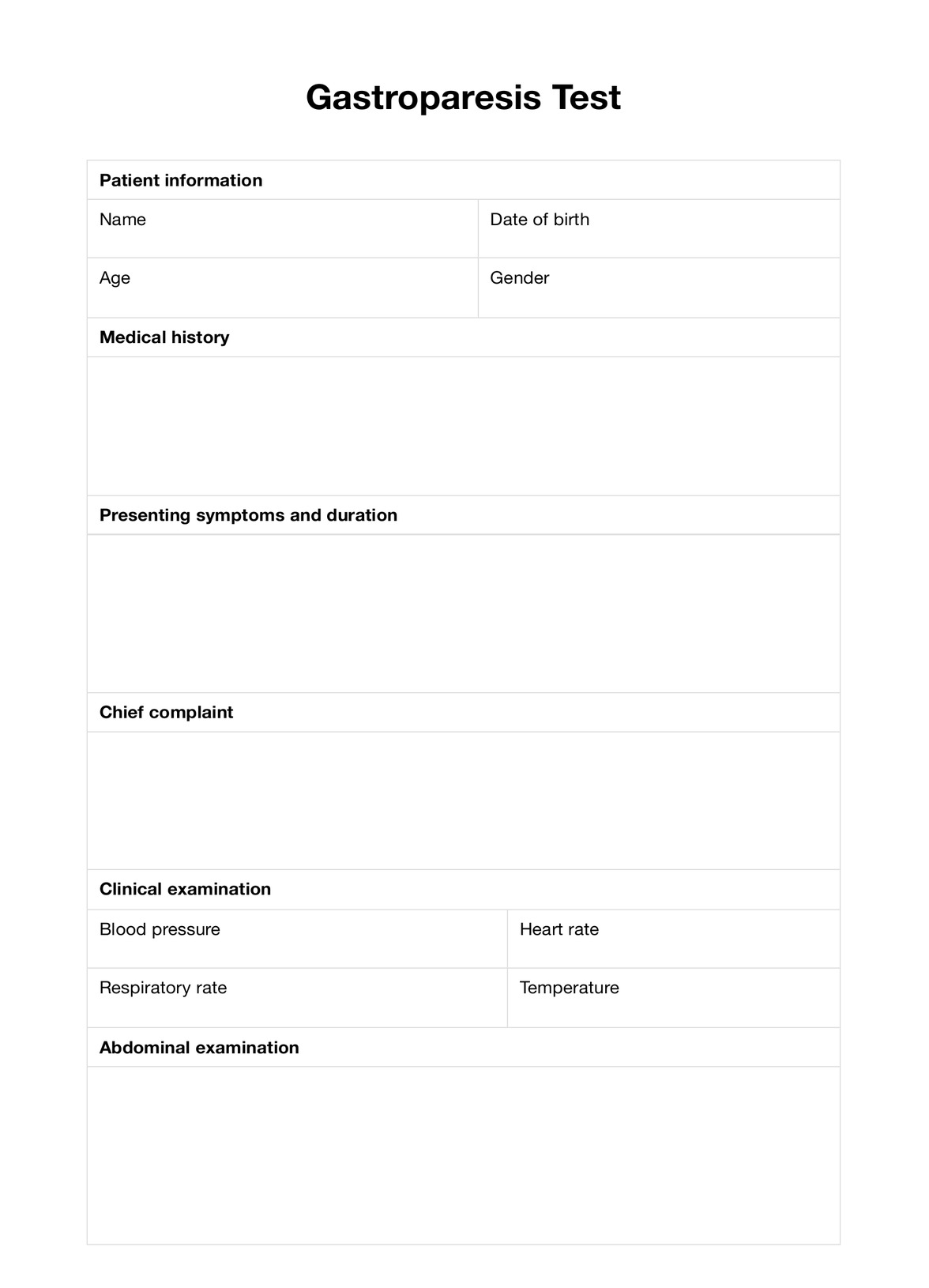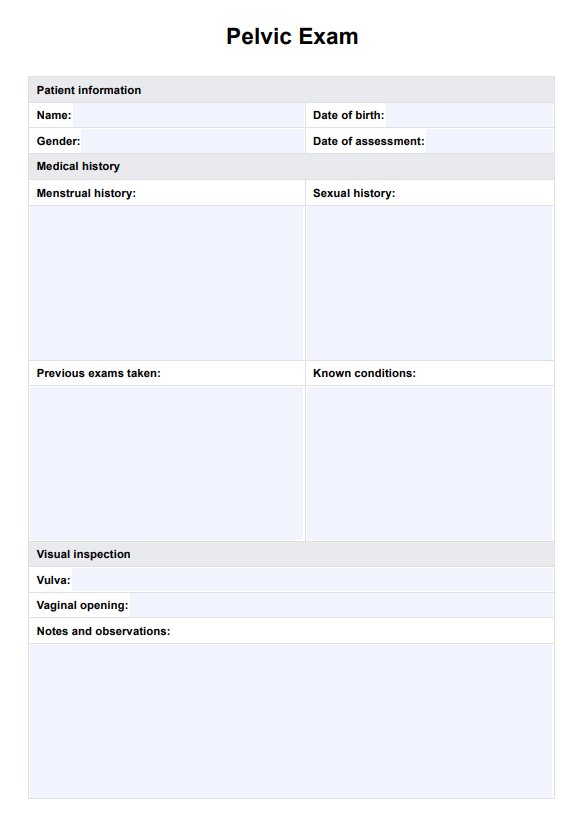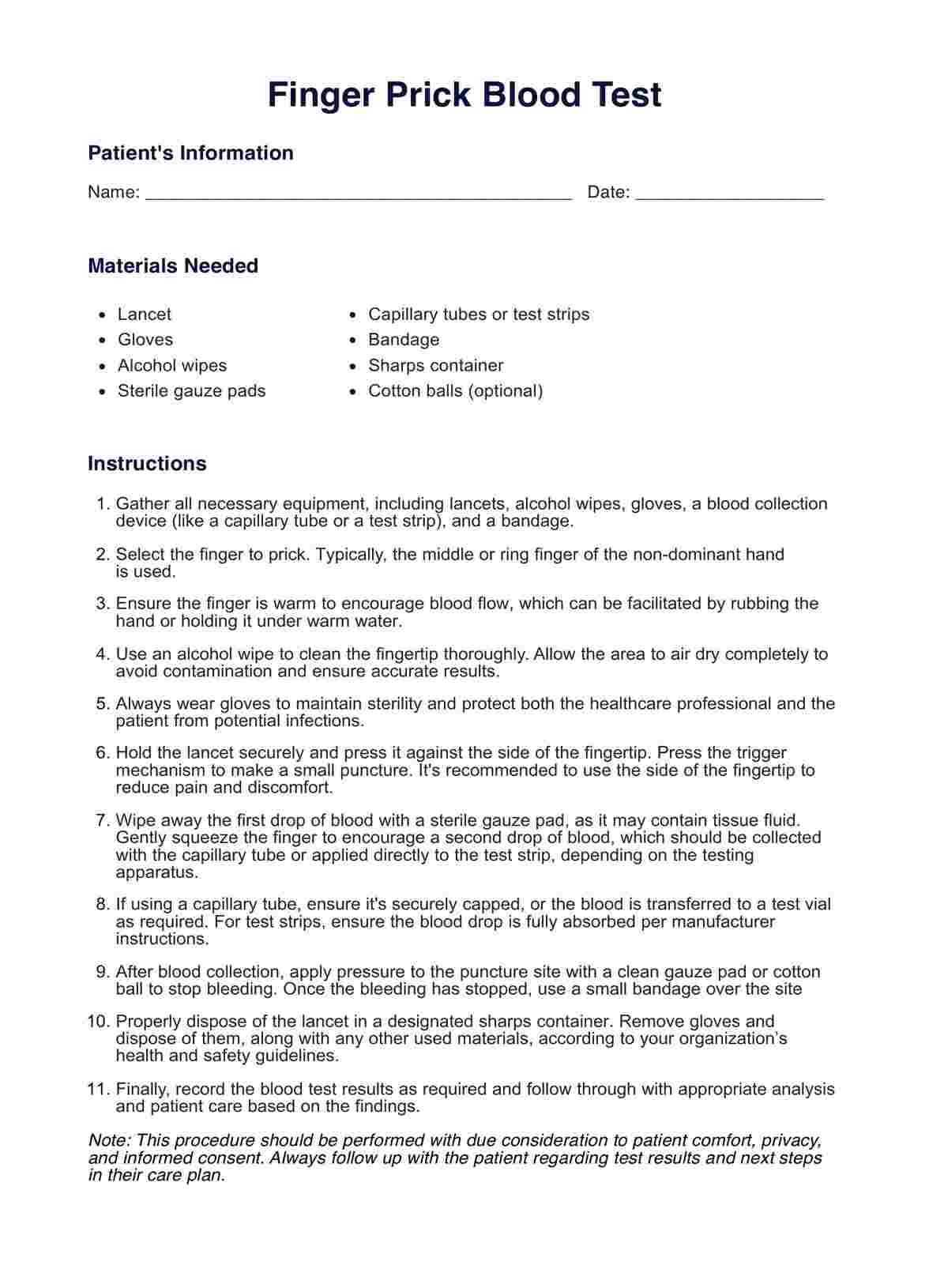Phalen's Test
Learn about Phalen's Test and include it in your clinical tests for diagnosing carpal tunnel syndrome!


What is the Phalen's Test?
Carpal tunnel syndrome (CTS) is a common disorder that causes pain, numbness, and tingling in the hand and arm. It occurs when the median nerve, one of the major nerves in the hand, becomes compressed or squeezed at the wrist. CTS is caused by various factors, including repetitive motions, genetics, pregnancy, and underlying medical conditions.
Doctors may perform a Phalen Test (also known as Phalen's Maneuver) to help diagnose carpal tunnel syndrome. This simple physical exam evaluates the median nerve distribution for signs of compression. American orthopedic surgeon George S. Phalen developed it and has been used since the 1950s.
Phalen's Test Template
Phalen's Test Example
How does our Phalen's Test template work?
This free Phalen's Test worksheet provides an easy-to-understand guide on how to perform the exam. Follow these steps to get started:
Step 1: Access our free template
Our free Phalen's Test template can be downloaded using the link provided on this page. Alternatively, you can access it using our resources library or the Carepatron app.
Step 2: Discuss the exam with your patient
Explain how the assessment works and why it's important. Before you proceed, ask your patient if they have any questions.
Step 3: Conduct the assessment
Use the instructions provided on the form to administer the Phalen's Test.
The patient must be in a standing or sitting position. You, the healthcare professional, will have them maximally flex both wrists while pressing the dorsal side of each hand against each other. They will keep both dorsal sides pressed against each other for one minute while keeping their wrists maximally flexed. This position will compress the median nerve between the transverse carpal ligament and the distal ends' anterior borders.
During the assessment, observe the patient for signs of tingling, numbness, or pain in their thumb, index, middle, and/or the medial half of the ring finger.
You may also opt to conduct the Reverse Phalen's Test. To do this, your patient must press their hands as if praying. The proximal ends of both hands must be pressed together for one minute, and their hands must be lowered to the stomach area without lowering their elbows. You'll observe the same signs as the regular Phalen's Test.
Step 4: Record the patient's results
Document your patient's results on the template. Be sure to tick if the test is positive or negative.
Phalen's Test results and interpretation
It is a positive test if the patient experiences tingling, numbness, pain, or weakness during the assessment, whether it's the regular Phalen's Test or reverse. This can indicate median nerve compression, a potential sign of carpal tunnel syndrome.
If the patient does not experience any symptoms, you can consider it a negative test, but it does not necessarily mean that CTS is ruled out. You may consider other factors, such as medical history, patient symptoms, and other physical examination results.
Additional tests and assessments, such as the Carpal Compression Test and Hand Elevation Test, may be needed to determine an accurate clinical diagnosis.
When to conduct the Phalen's Test
The Phalen Test is designed to help healthcare professionals quickly and efficiently evaluate patients for potential carpal tunnel syndrome. You can perform this test to:
Evaluate the median nerve for signs of compression
You can administer the Phalen's Test to assess the patient's median nerve for any evidence of compression. This can help determine if the patient is at risk for CTS or other nerve-related conditions.
Eliminate the need for costly imaging tests
This simple physical assessment can rule out CTS before you move on to other tests, such as X-rays or MRIs. This can help you save time and money while ensuring your patient receives the best care possible.
Support an accurate diagnosis
Combining the results of this assessment with other tests and exams can be used to support a more accurate diagnosis. This holistic approach enhances the overall diagnostic process and assists in providing optimal medical care.
Reassess the effectiveness of treatment
You can also use this test to assess the effectiveness of any treatments prescribed for CTS. By administering the exam periodically, you can gain insight into your treatment plan's success and make any necessary adjustments.
Who is this Phalen's Test PDF for?
This Phalen's Test PDF is intended for healthcare professionals who must evaluate patients for potential carpal tunnel syndrome. Specifically, it can be a handy assessment tool for:
- Physicians
- Physician's assistants
- Nurses
- Physical therapists
- Chiropractors
- Athletic trainers
- Orthopedic surgeons
- Occupational therapists
- Sports medicine specialists
This test can also be used in various settings, such as hospitals, primary care clinics, and even home visits.
Benefits of this Phalen's Test template
The Phalen's Test is a highly regarded provocative test and is highly recommended for detecting carpal tunnel syndrome (Valdes & LaStayo, 2013). It's even preferred over Tinel's Sign, which is another provocative test for the syndrome, due to its greater sensitivity and specificity (Kuschner et al., 1992).
Our free Phalen's Test template has several advantages, including the following:
It's comprehensive yet simple
The template covers all the critical components of a successful Phalen's Test, including the Reverse Phalen's Test, while being easy to understand and use. You can perform the test within minutes and get accurate results you can use as part of a diagnosis.
It's free to download and use
You don't need to pay anything to access this Phalen's Test template. All you have to do is download the PDF, and you're good to go. It's also fully digital, so you don't need to worry about printing a hard copy.
It can help patients get the proper treatment
By administering this test, you can ensure your patients get the proper care. You can quickly and accurately assess them for CTS and determine the best action.
References
Kuschner, S. H., Ebramzadeh, E., Johnson, D., Brien, W. W., & Sherman, R. (1992). Tinel's sign and Phalen's test in carpal tunnel syndrome. Orthopedics, 15(11), 1297–1302. https://doi.org/10.3928/0147-7447-19921101-08
Valdes, K., & LaStayo, P. (2013). The value of provocative tests for the wrist and elbow: A literature review. Journal of Hand Therapy, 26(1), 32–43. https://doi.org/10.1016/j.jht.2012.08.005
Commonly asked questions
The Phalen's Test was developed by George S. Phalen, an American orthopedic surgeon and professor, in the 1950s. He initially used the assessment to diagnose carpal tunnel syndrome in patients, but it has since been adapted for other nerve-related conditions.
The Phalen's Test can evaluate the median nerve for signs of compression and rule out carpal tunnel syndrome. It can also accurately diagnose other nerve-related conditions and assess the effectiveness of treatments.
The Phalen's Test is used to evaluate the median nerve for signs of compression and determine whether a patient has carpal tunnel syndrome or other nerve-related issues.


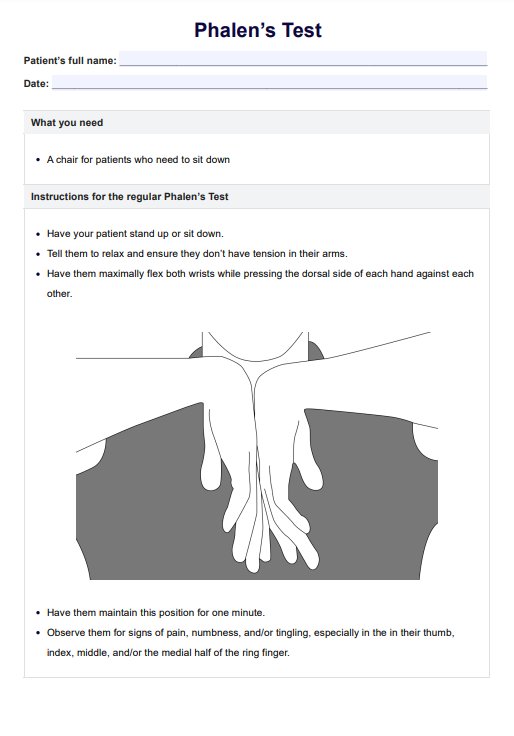
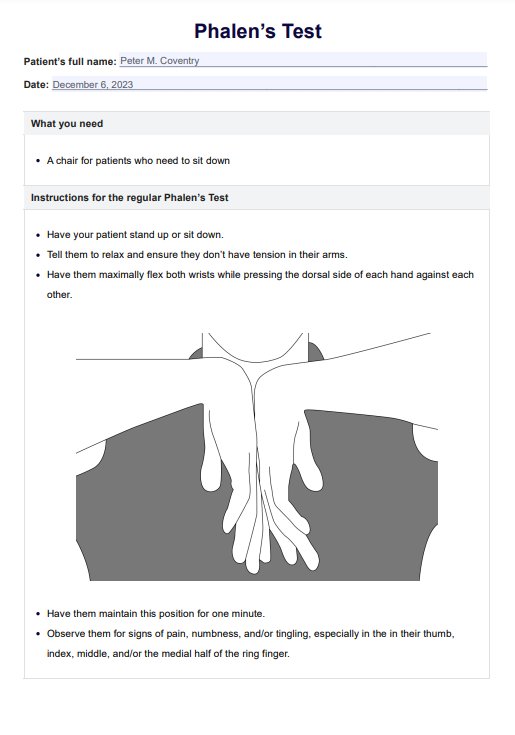





















-template.jpg)














































































